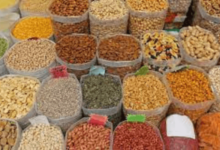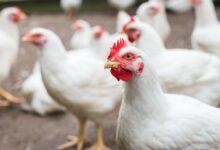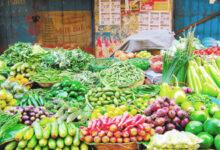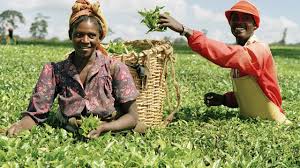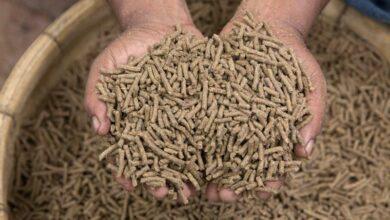
Top 6 Cultivated Crops In Taraba State, Nigeria And Their Economic Values
It is very difficult to separate Taraba from farming in Nigeria. The indigenes have being growing several crops in Taraba that have helped to boost the economy of the state.
Taraba derived its name from the Taraba River. It is located in the middle belt region of Nigeria and it has its capital in Jalingo. There are four main rivers that flows in Taraba they include; Rivers Benue, Donga, Taraba and Ibi. These four rivers greatly contributes to the agricultural practices been carried out in the state.
👉 Relocate to Canada Today!
Live, Study and Work in Canada. No Payment is Required! Hurry Now click here to Apply >> Immigrate to CanadaThe state shares border with Nassarawa and Benue in the west, Bauchi and Gombe in the north and Plateau in the northwest. It has rich mountainous features with the Mabilla plateau as the most prominent.
There are 16 local government areas in Taraba which practice farming and other agricultural activities.
Notable Crops In Taraba
The people of Taraba have taken up farming as their major occupation due to the tropical nature of the area as well as the rivers that flow in the state. They grow a number of cash crops such as Coffee, Tea, Groundnut, Cotton, Maize, Rice, Sorghum, Millet, Cassava and Yam. I will be looking at some of these crops and their economic values.
1. Coffee
Coffee is one of the most important cash crops grown in the world. There are two main varieties of coffee plant; Arabica and Robusta.
The coffee plant can grow anywhere between 4-7m in height. When the coffee plant matures it starts to produce a lot of fruits and leaves.
Coffee would require a lot of rainfall between 15-30cm when it starts bearing fruits but would require much less later when the fruits start to ripen.
👉 Relocate to Canada Today!
Live, Study and Work in Canada. No Payment is Required! Hurry Now click here to Apply >> Immigrate to Canada
Economic Values Of Coffee
- Coffee beans when roasted is used to make coffee; one of the most consumed beverage in the world.
- The mucilage of coffee berry is used to make alimentary yeast.
- The pulp of coffee could be dried and use as fuel or feed for cattle.
2. Tea
The tea plant that bears the tea leaves is known as Camellia Sinensis.
Tea is grown mainly in tropical region and requires rainfall of about 127cm for optimum production. For propagation, it requires either the seeds or the cuttings.
Tea seeds are better grown on acidic soils and can take between 4 to 12 years for it to produce seeds while harvesting can start from the third year.
For harvesting, only the flushes (buds and leaves) are picked. These flushes are grown during the growing season and come out every 7-15 days.
Economic Values Of Tea
- The seeds of tea plant have golden-yellow oil which can be processed into lamp oil.
- Green tea has great medicinal benefits such as reducing risk of heart disease, lowering body cholesterol and increasing the body’s metabolism.
- Tea extract obtained from black tea is used to flavor many commercial food and drinks.
- Tea leaves is generally used to make tea, the most consumed beverage in the world.
3. Groundnut
Groundnut is an important legume as well as an oil crop. It is grown mostly in the tropics.
Groundnut contains several nutrients and is a good source of B Vitamins, Vitamin E, Manganese, Phosphorus and dietary fibres.
Groundnut can grow to a height of 30 to 50 cm and its roots contain the nitrogen-fixing bacteria.
Groundnuts grow best in soils with pH of 5.9 to 7 and the soil should be light, sand-loam.
Economic Values Of Groundnut
- Groundnut is used for making cooking oil which is used by many people.
- Roasted groundnuts are used for making snacks.
- Peanut flour is used as a flavor enhancer due to its high protein content.
- Oil cake meal obtained from the residue of groundnut oil processing is used as animal feed and fertilizer.
4. Cotton
Cotton tree is a unique plant which produces cotton; which is a soft fluffy fibre rich in cellulose. Cotton is predominantly white but it can also come in other colors such as brown, pink and green.
It grows in a protective case known as a boll, which also contains the seed.
Cotton does not need a lot of nutrients to grow; hence it can be grown on fairly ok soil. It also requires a moderate rainfall of about 60-120 cm and adequate sunshine.
Cotton is harvested both manually and mechanically through the use of cotton stripper and cotton picker.
Economic Uses Of Cotton
- Cotton is industrially used to make textile materials such as towels, denim, curdory etc.
- Cotton is used to make fishing net, tents and cotton paper.
- Cottonseeds are used for making cotton oil which is an important vegetable oil.
- Cotton seed meal and cottonseed hull are both used as animal feed.
5. Maize
Maize is one of the most important grain grown in the world and it is rich in carbohydrate.
It contains dietary fibres and supplies manganese and phosphorus. It is a good source of thiamin, niacin, B vitamins and pantothenic acid.
A mature maize plant can grow to a height of about 2.5m but some do grow as tall as 12m.
Economics Importance Of Maize
- Maize is used for making cornflakes.
- It is used for making corn starch, sweeteners, cooking oil and grain alcohol.
- The starch from maize can be used for making chemical products like plastics, fabrics and adhesives.
- Maize is an important bio-fuel; it is used to produce ethanol fuel, biomass fuel as well as feedstock for biogas plants.
6. Rice
Rice is a stable food grown in Taraba. It is enjoyed by many and can be processed into different forms.
Mature rice plants can grow to a height of between 1-1.8m and it requires a lot of rainfall. Rice cultivation is labour intensive and it can be grown on any type of terrain.
Rice can come in several varieties such as brown, red and white. The paddy (unmilled rice) is usually harvested when the grain attains a moisture content of 25%.
Economic Importance Of Rice
- Rice is one of the most important grains traded in the world.
- Rice can be used to produce starch which has great industrial uses.
- Rice bran; the oily inner layer is an important commodity used to produce various daily needs.
